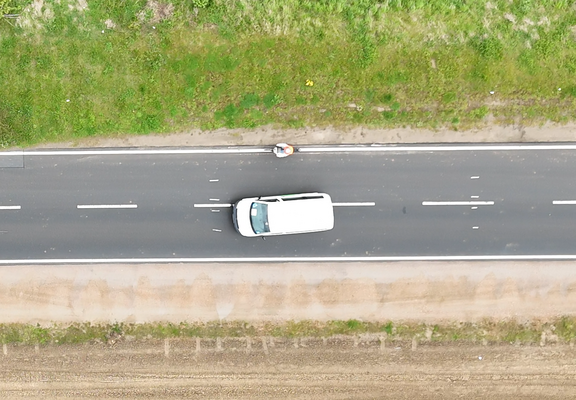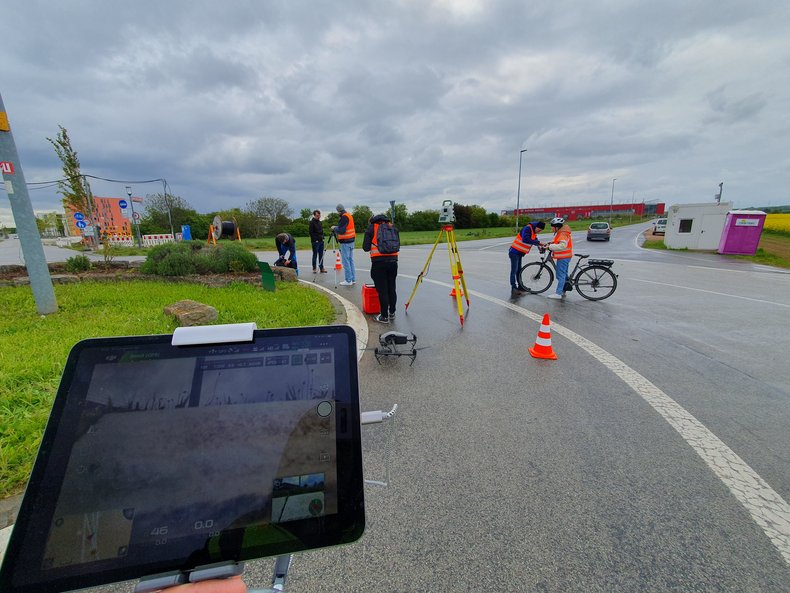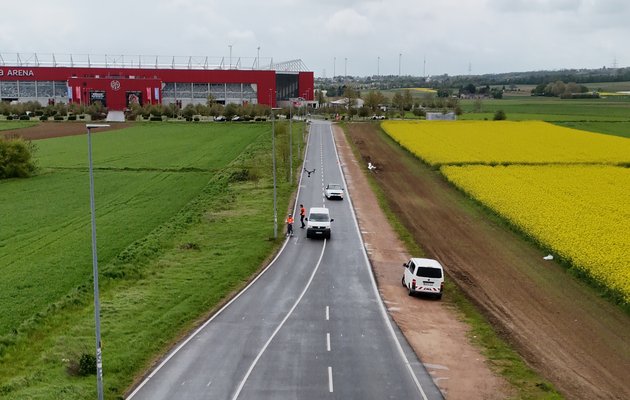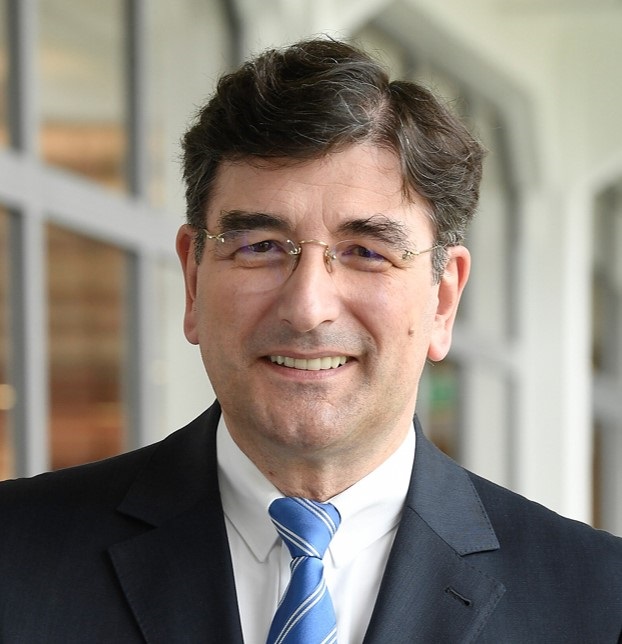In early May, students of the master’s degree program in Geoinformatics and Surveying at Mainz University of Applied Sciences conducted several innovative studies to improve the safety of bicyclists as part of the “RideSafe Mainz” teaching project. They not only used state-of-the-art drones from the standard and premium segments and action cameras, but also specially developed, low-cost sensors to measure the safety distance between cyclists and motor vehicles that were overtaking.
Since 2020, vehicles have been required by law to maintain a minimum distance when overtaking bicyclists – at least two meters outside city limits and at least 1.5 meters in cities. The students used the surveying day at the MEWA Arena in Mainz to test these regulations under real-life conditions and to examine the effectiveness of the sensor technology used. The image below, for example, gives an impression from the surveying day of how a vehicle should ideally overtake another traffic participant.

Photo: Yannick Adam & Paul Wolff
The innovative teaching project, funded by Mainz University of Applied Sciences and headed by Prof. Dr. Pascal Neis, aims to create an interactive, research-based, and problem-oriented learning environment for students. The results of this research not only have the potential to improve safety for cyclists, but also to promote interdisciplinary collaboration within the university and with external partners.
Yannick Adam & Paul Wolff
Students Emma Kunoth, Yannick Adam, Yannik Strüder, Paul Wolff, and Johannes Frank will present their research results and findings in a public colloquium at the university in mid-June. The final presentation of all funded teaching projects at Mainz University of Applied Sciences will take place in early December this year.
Special thanks go to Thomas Albrecht from PerspektiveOben 3DVermessung GmbH for providing additional technical equipment and his expertise in 3D surveying during the surveying day.
Text: Pascal Neis





